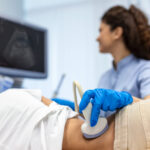Lower the RISK of liver damage: One third of Americans have nonalcoholic fatty liver disease
 (NaturalHealth365) Not all liver damage is caused by alcohol or hepatitis. In fact, these are not even the most common causes of liver disease in the United States anymore. The Mayo Clinic states that a main cause of liver disease in people of all ages is excess body weight, which leads to nonalcoholic fatty liver disease.
(NaturalHealth365) Not all liver damage is caused by alcohol or hepatitis. In fact, these are not even the most common causes of liver disease in the United States anymore. The Mayo Clinic states that a main cause of liver disease in people of all ages is excess body weight, which leads to nonalcoholic fatty liver disease.
Nonalcoholic fatty liver disease (NAFLD) can cause liver failure, if left untreated. Sadly, with epidemic levels of obesity throughout the Western world, this disease is showing up in even teenagers and young children. Because there are no “magic pill” treatment for this condition, the only real solution is a more holistic approach focused on an organic diet, exercise, liver-cleansing juices and high-quality supplements.
Can herbs help people concerned about liver damage?
The short answer is yes. In addition to eating a healthy diet and exercising to lose weight, those who have NAFLD can minimize the risk of liver damage by consuming milk thistle – one of the best herbs for liver health. Milk thistle benefits NAFLD by strengthening, cleansing, and healing the liver of previous damage from excess fat. This benefit has been confirmed by a number of studies.
Of course, you may be wondering, why is milk thistle so effective?
That’s because of silymarin, a compound found in milk thistle, and it is the part of the plant that heals the liver of NAFLD. It both protects against the damage fat can do to the liver, and heals the damage already done.
Because the serious risks to a person’s health and even life posed by liver damage caused by NAFLD, the very real milk thistle benefits in protecting the liver should not be ignored.
Why does silymarin improve liver function?
According to a July 2013 study in the journal European Cytokine Network, silymarin is a powerful broad spectrum anti-inflammatory agent. It also has potent anti-cancer properties, and very specific properties that benefit the liver. It acts as a shield for the liver, warding off threats of all kinds, especially those caused by NAFLD.
Its beneficial properties protect against oxidative damage, inflammation in the liver, and the formation of fibrosis that end stage NAFLD can lead to that causes the need for liver transplants for a patient with this disease to survive.
Obviously, the best thing to do (to avoid health issues) is to remain healthy – which will prevent NAFLD in the first place. This means eating a healthy diet low in ‘bad’ fats (like fried or cooked vegetable oils) and high in good fats (like coconut oil and avocados) – with lots of anti-inflammatory and antioxidant-rich fruits and vegetables.
Don’t forget to remain physically active – about 30 minutes per day plus walking more and staying well-hydrated will do the trick. These things ward off the obesity that leads to NAFLD. Start out by following a healthy diet and lifestyle routine, and you may never have to deal with NAFLD and the related health problems it can bring.
Here’s a great liver cleansing juice – you may want to try:
- 1/2 lemon or lime, with some peel
- 2 apples
- 2 dandelion or 2 rocket leaves or 2 cabbage leaves
- 1/2 cup broccoli florets, chopped
- 1 clove garlic or ¼ red onion (can use less if desired)
- 1/2 cup parsley
Obviously, organic produce is best and, since this is a strong mixture, you may dilute it with 1 cup water, extra apple or dandelion root tea. Other great juicing ideas can include beets – which are great for supporting healthy liver function.
If you are already on your way to getting NAFLD or already have it, be sure to seek the advice of an experienced, integrative healthcare provider to develop the best plan of action for you.
Above all, never give up on your health because you deserve to enjoy life pain-free.
Sources for this article include:
MayoClinic.org



